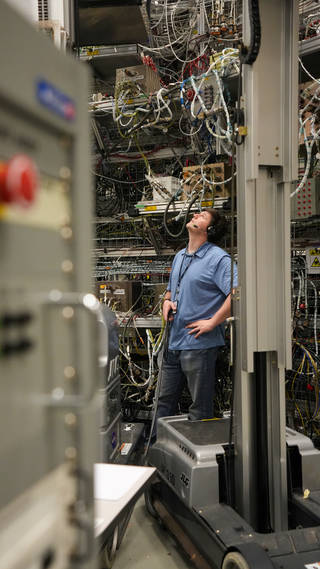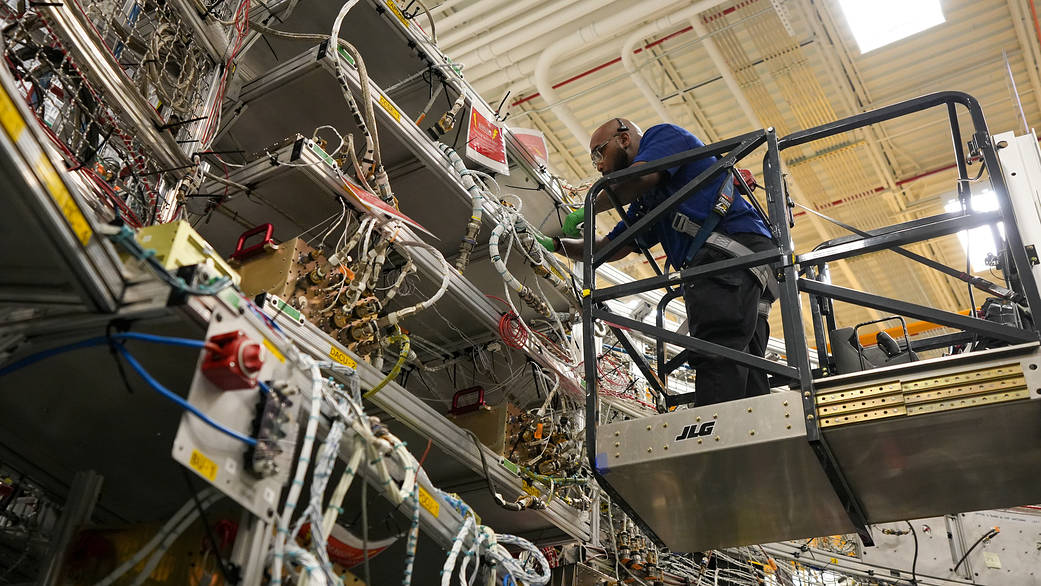
The first Artemis astronauts have begun crew training for their Artemis II mission around the Moon, and teams at NASA’s Marshall Space Flight Center in Huntsville, Alabama, are testing and configuring the flight software for the mega Moon rocket that will launch them on their journey.
When NASA’s SLS (Space Launch System) launches NASA’s Artemis II crew aboard the Orion spacecraft, it will produce more than 8.8 million pounds of thrust. The SLS rocket’s flight software acts as the “brains” of the rocket, activating 48 hours prior to launch to command all that power and energy for the first eight minutes of the mission through the separation of its in-space propulsion stage. Inside the SLS Software Development Facility (SDF) at Marshall, software engineers recently completed the first part of formal qualification testing for the Artemis II SLS flight software.
The rocket’s flight software consists of approximately 50,000 lines of code. To test the SLS computer systems and flight software ahead of launch, a team inside the SDF simulates a series of normal and off-nominal SLS- rocket and environmental scenarios, called test cases. SLS flight software qualification testing includes multiple test procedures to verify software requirements. By the conclusion of the two-week test period on May 15, engineers had completed 179 test procedures with approximately 58,000 test cases. In comparison, the first phase of qualification testing for Artemis II completed in 2022 had 72 test procedures consisting of 9,500 test cases.
“The SLS flight software team integrated operational improvements and new test scenarios in preparation for Artemis II based on lessons learned from the successful launch of Artemis I in November 2022,” said Dan Mitchell, NASA’s lead SLS integrated avionics and software engineer. “The test facilities at Marshall Space Flight Center have the capability to produce thousands of test cases the SLS flight software is required to detect and respond to appropriately on launch day, offering us the opportunity to assess and certify all the major software elements and systems on the rocket before the first crew flies on SLS.”
The second and final phase of formal qualification testing for the SLS flight software in the SDF is set to begin in July. Beginning in the fall, engineers will begin integrated system testing in the SLS System Integration Lab (SIL) using the full suite of SLS avionics hardware and flight software. Together, the test results from the SIL system and the flight software SDF will provide teams key evidence to support mission readiness for Artemis II. By the time the SLS rocket launches Artemis II, flight software engineers will have “flown” the SLS mission more than 100,000 times within the various SLS avionics and software development and test facilities.
NASA is working to land the first woman and first person of color on the Moon under Artemis. SLS is part of NASA’s backbone for deep space exploration, along with the Orion spacecraft, advanced spacesuits and rovers, the Gateway in orbit around the Moon, and commercial human landing systems. SLS is the only rocket that can send Orion, astronauts, and supplies to the Moon in a single mission.
Image Credit: NASA/ Brandon Hancock



























